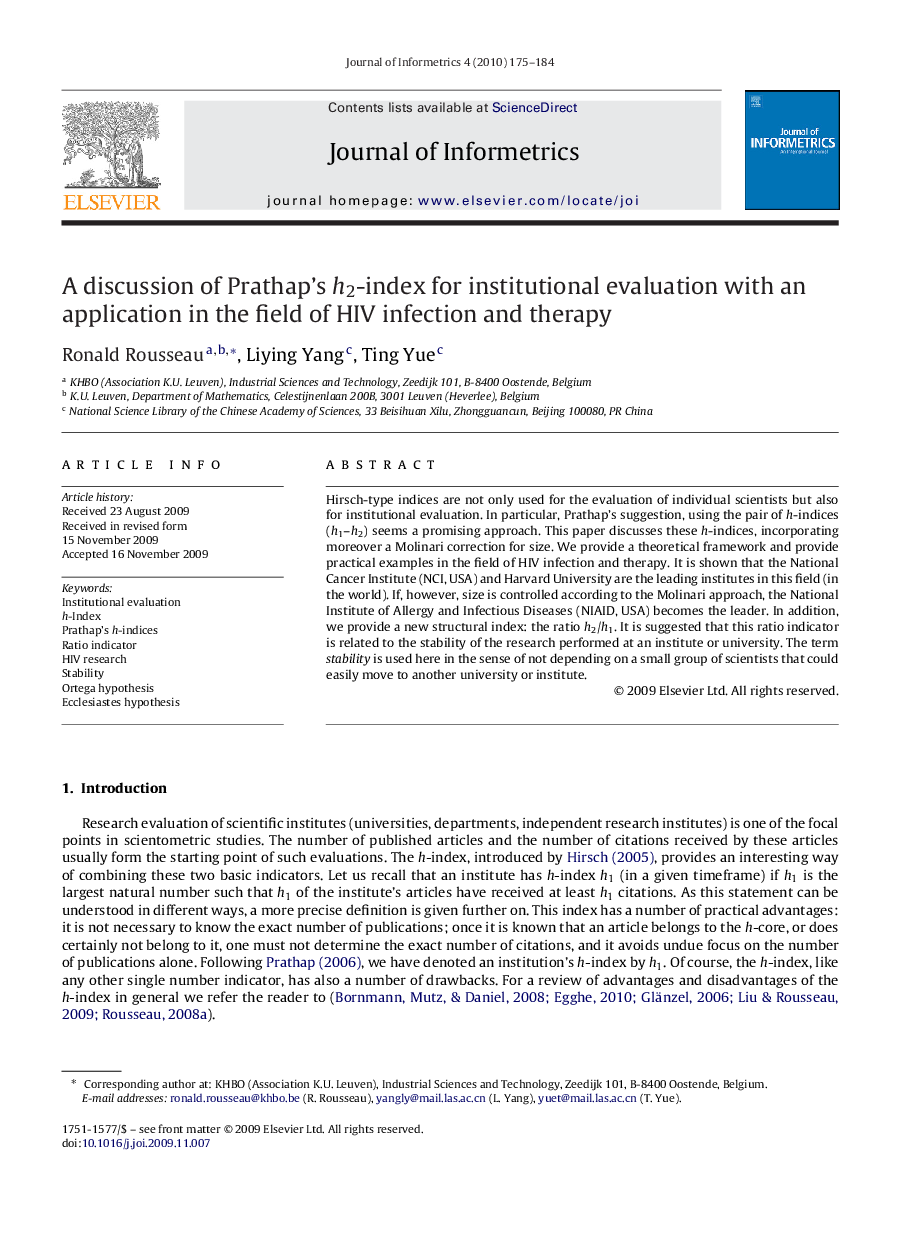| Article ID | Journal | Published Year | Pages | File Type |
|---|---|---|---|---|
| 524137 | Journal of Informetrics | 2010 | 10 Pages |
Hirsch-type indices are not only used for the evaluation of individual scientists but also for institutional evaluation. In particular, Prathap's suggestion, using the pair of h-indices (h1–h2) seems a promising approach. This paper discusses these h-indices, incorporating moreover a Molinari correction for size. We provide a theoretical framework and provide practical examples in the field of HIV infection and therapy. It is shown that the National Cancer Institute (NCI, USA) and Harvard University are the leading institutes in this field (in the world). If, however, size is controlled according to the Molinari approach, the National Institute of Allergy and Infectious Diseases (NIAID, USA) becomes the leader. In addition, we provide a new structural index: the ratio h2/h1. It is suggested that this ratio indicator is related to the stability of the research performed at an institute or university. The term stability is used here in the sense of not depending on a small group of scientists that could easily move to another university or institute.
